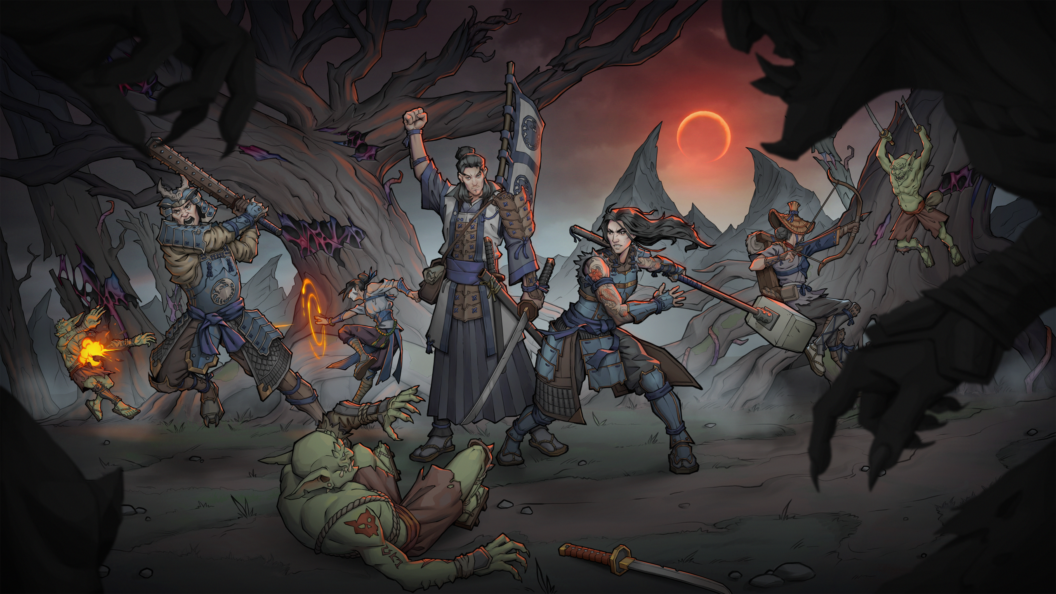Shadowveil: Legend of the Five Rings Invokes the Thrill of Tactical Combat
Shadowveil: Legend of the Five Rings has made a significant entrance into the gaming world as the first video game adaptation of the storied Legend of the Five Rings franchise, which has captivated audiences for over three decades. This new offering, a roguelite auto-battler, challenges players to strategize under pressure, leveraging a unique blend of decision-making and chance. The game invites players into a realm filled with dark energy and strategic warfare, but it is also steeped in a learning curve that can be as unyielding as the enemies faced.
Overview of Gameplay Mechanics
In Shadowveil, players begin their journey by selecting a hero from the Crab Clan, with choices ranging from berserker fighters wielding hammers to more tactical support characters. Success hinges on carefully training these heroes and strategically assigning abilities, items, and buffs gained during gameplay. As battles commence, players designate starting positions on a hex grid for their fighters, observe the unfolding combat, and can only strategize for future encounters based on outcomes—whether victorious or defeated.
Players are then granted the opportunity to regroup at their base camp, where they can procure upgrades using resources gathered from their previous runs. This cycle of preparation, battle, and regrouping creates a robust loop of learning and improvement, although player agency is limited during combat itself, adding an element of frustration.
A Challenging Learning Curve
Though the gameplay offers an intriguing mix of challenge and achievement, early impressions suggest that Shadowveil could mitigate its learning curve to provide a more accessible experience. After several hours of play, the excitement of combat battles intertwines with the potential for player strategy to falter against the randomness of algorithmic decisions, which some players may find disheartening.
One player comment highlighted the unpredictability of the auto-battler format, stating, “Having responsibility for all the prep, but no control over what fighters will actually do… can feel punishing and unfair." This sentiment captures a duality within the game that may deter those less inclined toward trial-and-error gameplay.
Resource Management and Strategic Choices
Incorporating roguelite elements, the game encourages players to gather resources throughout their encounters, which can be utilized to unlock new fighter types and enhance existing squad members for future engagements. This aspect introduces a layer of strategic decision-making, as players must choose among various currencies and upgrade options. With a myriad of resources available—each with specific uses—players face tough decisions about what to invest in, balancing risk and reward with every action.
The procedural generation of paths within the game means that each run can be drastically different, enhancing replayability while simultaneously increasing complexity. Ultimately, the outcomes can feel dictated by random chance or one’s previous strategies, requiring players to adapt continually.
Visuals and Atmosphere
The title also shines in its atmospheric presentation. Shadowveil envelops players in a haunting world teeming with enemies and dynamic landscapes. Key visuals include environments that require players to identify choke points and optimize soldier pairings against overwhelming odds. With vibrant design and engaging graphics, the game manages to immerse its audience effectively, adding to the overall tension and excitement during confrontations.
Conclusion: The Significance of Shadowveil
Shadowveil: Legend of the Five Rings represents a daring step into the realm of video game adaptations of beloved franchises. By blending tactical gameplay with roguelite elements, it not only appeals to the existing fanbase of the Legend of the Five Rings but may also attract newcomers intrigued by the auto-battler genre.
As the game sees more player engagement, there is potential for developers at Palindrome Interactive to address gameplay concerns and refine the experience through future updates. Whether players find the balance of strategy and randomness rewarding or frustrating will significantly impact the game’s reception and longevity in the competitive gaming landscape. The thrill of victory and the agony of defeat are intertwined through every run, making it a captivating, albeit challenging, experience for engaged players.









